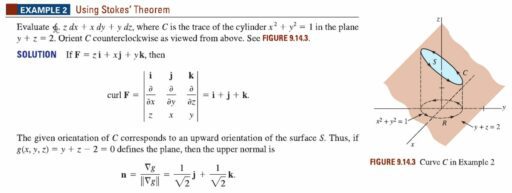Table of Contents
Database normalization is an essential process in designing a reliable and efficient database system. It involves organizing data to minimize redundancy and enhance data integrity. Originally introduced by Edgar F. Codd, normalization through various normal forms helps in achieving a robust database structure. This article delves into the fundamentals of normalizing data in databases, exploring its basic concepts, practical applications, and advanced considerations.
Key Takeaways
- Normalization is a systematic approach of decomposing tables to eliminate data redundancy and ensure data integrity.
- Understanding functional dependencies is crucial for applying the rules of normalization and achieving database efficiency.
- The normal forms, starting from the First Normal Form (1NF) up to Boyce-Codd Normal Form (BCNF), provide a framework for database design.
- While normalization reduces redundancy, it is also necessary to consider performance implications and when denormalization might be appropriate.
- Advanced normal forms, such as the 4th and 5th, are rarely used in practice, but they highlight the ongoing development of normalization theory.
Understanding the Basics of Database Normalization


Defining Normalization and Its Goals
Data normalization is a systematic approach aimed at organizing data in a database to reduce redundancy and enhance data integrity. The process involves decomposing larger tables into smaller, more manageable ones and establishing relationships between them. This not only ensures that each data item is stored only once, but also prevents anomalies during data operations such as insertions, updates, and deletions.
The goals of normalization can be summarized as follows:
- To minimize data redundancy
- To avoid data anomalies
- To ensure data is stored logically
- To improve database efficiency and maintenance
Normalization is not an end in itself but a means to an end. It is a foundational aspect of database design that, when done correctly, leads to a robust database system capable of handling complex queries and operations with ease. The pursuit of normalization must be balanced with the practical requirements of the database’s intended use to avoid over-normalization, which can lead to its own set of problems.
Normalization typically involves a series of steps, each designed to address specific types of anomalies and to bring the database closer to the desired state of efficiency and consistency.
The Role of Functional Dependencies
Functional dependencies are at the heart of database normalization, establishing the relationships between fields in a table. Understanding these dependencies is essential to organizing data effectively and avoiding anomalies. For instance, if a customer’s name and address are dependent on their customer ID, then the customer ID uniquely identifies each customer’s name and address.
Functional dependencies can be either trivial or non-trivial. A trivial functional dependency means that the dependency is inherent to the structure of the data, such as a field depending on itself. Non-trivial dependencies, on the other hand, are not so obvious and require careful analysis to identify.
The identification and understanding of functional dependencies enable the creation of a database structure that minimizes redundancy and enhances data integrity.
The rules of functional dependencies are governed by several principles, including Armstrong’s Axioms and the concept of attribute closure. These rules help in deriving all possible functional dependencies for a given set of attributes, which is a critical step in the normalization process.
Normalization as a Design Tool for Database Efficiency
Normalization is not just a theoretical concept; it’s a practical design tool that enhances database efficiency. By reducing data redundancy and eliminating anomalies, normalization ensures that each piece of data is stored in only one place. This approach minimizes the potential for inconsistencies and errors during data manipulation operations such as insertions, updates, and deletions.
- Minimize Storage Space: Normalized databases require less storage because they avoid duplicate records.
- Improve Query Performance: Queries against a normalized database can be more efficient, as they have to process less duplicate data.
- Enhance Data Integrity: By isolating data in separate tables based on relationships, normalization helps maintain data accuracy and consistency.
Normalization is a cornerstone of relational database design, underpinning the creation of databases that are both robust and scalable. It is essential for ensuring that databases accurately reflect the complex relationships within the data they store.
Exploring the Normal Forms in Database Design


First Normal Form (1NF) Explained
Achieving the First Normal Form (1NF) is the initial step in the normalization process. It lays the groundwork for a well-structured database by ensuring that each column in a table holds unique, atomic values. This means that no column should contain sets of values or repeating groups. To put a table into 1NF, you must eliminate any multi-valued attributes and ensure that each record is distinct and easily identifiable.
In 1NF, data is organized into tables where each column represents a unique data point, and each row corresponds to a single record. This structure is crucial for maintaining data integrity and simplifying query operations.
For example, consider a table that initially stores multiple phone numbers for a contact in a single column. To conform to 1NF, these phone numbers would need to be separated into individual rows, each with a unique identifier for the contact. Here’s how the transformation might look:
| Contact ID | Phone Number |
|---|---|
| 1 | 555-1234 |
| 1 | 555-5678 |
| 2 | 555-9012 |
By adhering to 1NF, databases avoid the complexities that arise from having multiple values in a single column, which can lead to anomalies and inefficiencies in data management.
Second Normal Form (2NF) and Its Requirements
The journey to a well-structured database continues with the Second Normal Form (2NF), which builds upon the foundation laid by the First Normal Form (1NF). To achieve 2NF, a table must first satisfy all the requirements of 1NF, which includes having atomic column values and unique records. The core principle of 2NF is the elimination of partial dependencies; non-key attributes must be fully dependent on the primary key, not just a part of it.
In practice, this means that if a table has a composite primary key (a key made up of two or more columns), each non-key attribute should relate to the whole key rather than just a subset. This is crucial for preventing update anomalies and ensuring data integrity. For tables with a single-column primary key, 2NF is automatically met since partial dependency cannot occur.
The essence of 2NF is to streamline the relationship between data by ensuring that each piece of information is anchored to a unique identifier, thus simplifying data management and retrieval.
To illustrate, consider a table that includes product information and supplier details. If the primary key is a combination of product ID and supplier ID, then attributes like supplier address should not be in this table since they do not depend on the product ID. Instead, they should be moved to a separate supplier table. Here’s a simplified example of moving towards 2NF:
| Before 2NF | After 2NF |
|---|---|
| Product ID, Supplier ID, Supplier Address | Product ID, Supplier ID |
| (Supplier Address is partially dependent) | (No partial dependency) |
By adhering to 2NF, databases become more organized, reducing redundancy and enhancing the efficiency of data operations.
Third Normal Form (3NF) and Beyond
Achieving the Third Normal Form (3NF) is a critical step in database normalization. It builds upon the Second Normal Form (2NF) by ensuring that all non-key attributes are not only fully functional on the primary key but also independent of each other. This level of normalization is aimed at eliminating transitive dependencies, which occur when non-key attributes depend on other non-key attributes.
In 3NF, every non-key attribute must directly depend on the primary key, and no indirect or transitive relationships are allowed.
Beyond 3NF, database designers encounter the Boyce-Codd Normal Form (BCNF), which is often considered a stricter version of 3NF. BCNF addresses certain anomalies that 3NF does not cover. While 3NF and BCNF are sufficient for most practical applications, theoretically, there are higher forms of normalization, such as the Fourth Normal Form (4NF) and Fifth Normal Form (5NF), which deal with more complex scenarios involving multi-valued dependencies and join dependencies, respectively.
Boyce-Codd Normal Form (BCNF) and Its Significance
The Boyce-Codd Normal Form (BCNF) is an advanced step in the normalization process, often regarded as an extension of the Third Normal Form (3NF). BCNF addresses specific types of redundancy that 3NF does not resolve, particularly when a table has multiple candidate keys. A table is in BCNF if, for every one of its non-trivial functional dependencies, the left-hand side is a superkey.
To achieve BCNF, one must:
- Identify all functional dependencies in the table.
- Ensure that each determinant is a candidate key.
- Decompose the table to eliminate any non-trivial functional dependencies that do not meet the criteria.
BCNF is sometimes referred to as 3.5 Normal Form due to its position between the Third and Fourth Normal Forms. It is crucial for maintaining data integrity and eliminating update anomalies. However, achieving BCNF can sometimes lead to a greater number of tables and, consequently, more complex queries.
Understanding BCNF is essential for database designers aiming for a robust and efficient database structure. It is particularly relevant when comparing SQL and NoSQL databases, as SQL databases are designed for structured data and typically benefit from rigorous normalization, whereas NoSQL databases cater to modern applications with dynamic schemas and may prioritize flexibility over strict normalization.
The Implications of Redundancy in Databases


Identifying and Eliminating Redundant Data
In the realm of database management, reducing data redundancy is a critical step towards achieving a streamlined and efficient database system. By identifying and eliminating unnecessary duplication of data, databases can improve both their performance and integrity. Normalization plays a pivotal role in this process by systematically organizing data into tables according to rules designed to minimize redundancy and dependency.
The process typically involves breaking down a database into smaller, more manageable tables. For example, consider a table that mixes customer information with order details. This can lead to multiple instances of the same customer data. By normalizing, we separate these concerns into distinct tables, linking them with keys. The result is a structure where each piece of data exists in only one place, significantly improving data consistency and reducing the likelihood of anomalies.
By ensuring that each data element is stored just once, normalization eliminates the need for repetitive updates, thereby enhancing the database’s overall efficiency.
Normalization not only saves storage space but also makes the database easier to understand and use. It is a systematic approach that, when properly implemented, can transform a cluttered and inefficient database into a model of clarity and efficiency.
Dependency Preserving Decomposition
In the process of normalizing a database, dependency preserving decomposition is crucial to maintain the integrity of functional dependencies while reducing redundancy. This technique involves breaking down a database schema into smaller, non-redundant schemas without losing the ability to enforce the original functional dependencies.
Decomposition is a balancing act between eliminating redundancy and retaining the logical connections between data.
To achieve a dependency preserving decomposition, one must ensure that each functional dependency is represented in at least one of the resulting tables after decomposition. This is essential to avoid the loss of any rules that govern the relationships between data attributes. The following table illustrates a simple example of how a schema might be decomposed while preserving dependencies:
| Original Schema | Decomposed Schema 1 | Decomposed Schema 2 |
|---|---|---|
| AB -> C | A -> B | B -> C |
| BC -> D | BC -> D |
By adhering to these principles, databases can maintain their integrity and avoid anomalies that may arise from improper decomposition. It is a step that requires careful planning and understanding of the underlying functional dependencies within the database.
Lossless Join and Its Importance in Normalization
A lossless join ensures that when a database is decomposed into multiple tables to achieve normalization, no information is lost. This concept is critical because it guarantees that the original data can be reconstructed from the decomposed tables through a join operation.
- Ensures data integrity during normalization
- Allows reconstruction of original data
- Prevents information loss during decomposition
Lossless join property is a cornerstone of database normalization, ensuring that the process of improving database structure does not compromise the completeness of the data.
Practical Applications of Normalization


Normalization in SQL and MySQL
In the realm of SQL and MySQL, normalization is a critical process for structuring a database efficiently. It involves organizing data into tables in such a way that redundancy is minimized and data integrity is maximized. The process typically follows a series of steps, each corresponding to a ‘normal form’, which are guidelines for how a database should be structured.
The most commonly implemented normal forms are the first three, as they provide a balance between database performance and complexity. Here’s a brief overview of what each entails:
- First Normal Form (1NF): Ensures that the table has no repeating groups of data.
- Second Normal Form (2NF): Builds on 1NF by removing subsets of data that apply to multiple rows of a table and placing them in separate tables.
- Third Normal Form (3NF): Removes columns not dependent on the primary key.
While the theory of data normalization in MySQL server is still evolving, practical applications typically peak at the third normal form. This is because 3NF databases are sufficiently efficient for most use cases, and further normalization can lead to increased complexity without significant benefits.
Normalization in SQL and MySQL not only helps in reducing data redundancy but also enhances the database’s ability to handle data anomalies. These anomalies, such as insertion, update, and deletion issues, can compromise the integrity of the database if not properly managed.
Real-world Examples of Normalized Databases
In the realm of database management, normalized databases are pivotal for operational success. They are designed to minimize redundancy and optimize efficiency, which is particularly evident in real-world applications. For instance, consider a customer relationship management (CRM) system. A normalized CRM database would separate information into distinct tables for customers, contacts, and interactions. This separation ensures that updates to a customer’s address or contact details need to be made in only one place, thereby reducing the risk of inconsistent data.
Another example is an e-commerce platform, where product information, inventory levels, and order details are stored in separate tables. This structure not only facilitates easier updates and queries but also enhances the clarity and meaningfulness of the data. By grouping related data together, the database becomes more intuitive and user-friendly, especially for those not involved in its design.
Normalization is not just about saving storage space; it’s about creating a database that is logical, efficient, and easy to use.
While the benefits of normalization are clear, it’s important to recognize that it is not a one-size-fits-all solution. The degree of normalization appropriate for a database can vary depending on the specific needs and context of its use.
When to Consider Denormalization
While normalization is crucial for reducing data redundancy and improving data integrity, there are scenarios where denormalization can be beneficial for database performance. Denormalization involves intentionally adding redundant data to a database to optimize read operations. This technique is particularly useful in large databases where JOIN operations can be costly in terms of performance.
- Performance Optimization: When database read speed is a priority and the overhead of JOIN operations is significant, denormalization can reduce query complexity and improve response times.
- Simplified Queries: For applications that require simple query structures, denormalization can make data retrieval more straightforward by reducing the number of tables involved.
- Reporting and Analytics: In systems where reporting and analytical queries are frequent, denormalization can provide faster access to aggregated data, which is often needed for decision-making processes.
Denormalization should be approached with caution, as it can introduce data anomalies and complicate data management. It is a strategic decision that requires a thorough understanding of the trade-offs involved.
Advanced Concepts in Normalization


Introduction to 4th and 5th Normal Forms
The journey through database normalization does not end with the Third Normal Form. Advanced normal forms like the Fourth (4NF) and Fifth Normal Forms (5NF) address more complex scenarios. 4NF is achieved when a table has no multi-valued dependencies other than a candidate key. This means that the table should not contain two or more independent and multivalued data about an entity.
5NF, also known as the Project-Join Normal Form, is an extension of 4NF. A table is in 5NF if it is in 4NF and cannot be decomposed into any number of smaller tables without losing data. This ensures that the database design is free of redundancy, and all the data can be reconstructed from smaller, related tables.
The application of 4NF and 5NF is often limited to specific cases where the complexity of data relationships demands such rigorous structuring. While these forms are essential for theoretical completeness, they are seldom used in typical enterprise applications.
Understanding these advanced normal forms is crucial for database professionals who aim to master data normalization techniques and ensure the integrity and efficiency of their databases.
The Debate on 6th Normal Form
The concept of the 6th Normal Form (6NF) has sparked considerable debate among database professionals. While not yet standardized, 6NF is proposed to address the complexities of temporal data, which involves tracking changes over time. The goal is to eliminate all non-temporal redundancy, potentially leading to highly decomposed table structures.
The pursuit of higher normal forms, including 6NF, is driven by the desire to achieve the utmost data integrity and flexibility in database design.
However, the practicality of implementing 6NF in real-world applications remains a topic of discussion. Critics argue that the level of decomposition may result in an excessive number of tables, complicating queries and possibly affecting performance. Proponents believe that with the right design, 6NF can offer unparalleled precision in handling temporal aspects of data.
The future of 6NF is uncertain, but its exploration underscores the ongoing efforts to refine database normalization techniques for evolving data requirements.
Normalization and Database Performance Tuning
Normalization is not just about eliminating redundancy; it’s also a critical factor in database performance tuning. Properly normalized databases can significantly enhance query performance by ensuring that data is stored in the most logical and efficient manner. However, the process of normalization must be balanced with the operational needs of the application.
- Storage Efficiency: Normalization often leads to a reduction in storage space by avoiding duplicate data.
- Query Optimization: A well-normalized database structure can simplify queries and make indexing more effective.
- Consistency and Integrity: Maintaining data consistency becomes easier with normalization, as updates have to be made in fewer places.
While normalization is beneficial for maintaining data integrity and optimizing storage, it can sometimes lead to complex queries and increased join operations. Performance tuning may require denormalization in certain scenarios to strike the right balance between data integrity and query efficiency.
It’s important to monitor and analyze the database performance regularly to determine if the current level of normalization is serving the intended purpose. Adjustments to the database schema may be necessary as the application evolves and data grows.
Conclusion
In conclusion, normalizing data in databases is a fundamental practice that ensures efficiency, consistency, and integrity in data management. Through the application of normal forms, from 1NF to BCNF and beyond, we can reduce redundancy, prevent anomalies, and streamline database operations. While the theory of normalization continues to evolve, with discussions extending to even the 6th Normal Form, practical applications often find the 3rd Normal Form to be the sweet spot for balancing data integrity with system performance. As we have explored, normalization not only aids in saving storage space but also enhances query performance, making data more meaningful and the database more user-friendly. Whether you are a database designer, developer, or administrator, mastering the art of normalization is crucial for building robust and reliable database systems that stand the test of time and scale with the needs of enterprises.
Frequently Asked Questions
What is database normalization?
Database normalization is a design technique that organizes data in a database to reduce redundancy and eliminate undesirable characteristics such as insertion, update, and deletion anomalies. It involves dividing larger tables into smaller, related tables and linking them with relationships to ensure data is stored logically and efficiently.
What are the goals of normalization?
The primary goals of normalization are to reduce data redundancy, improve query performance, ensure data integrity, and make the database more meaningful and easier to use. It also aims to simplify the database structure, making it easier to maintain and update.
What are functional dependencies in normalization?
Functional dependencies are relationships between attributes in a database that dictate how the value of one attribute determines the value of another. They are crucial in normalization for defining the relationships between tables and ensuring that the data is organized logically.
What are the normal forms in database design?
Normal forms are a series of guidelines used to determine how well-structured a database is. The most commonly used are the first (1NF), second (2NF), and third (3NF) normal forms, along with the Boyce-Codd Normal Form (BCNF). Higher normal forms like 4th and 5th also exist but are less commonly used.
Why is redundancy a problem in databases?
Redundancy in databases can lead to increased storage space requirements, data inconsistencies, and maintenance challenges. It can cause anomalies during data operations like insertions, updates, and deletions, leading to data integrity issues.
When should one consider denormalization?
Denormalization should be considered when a fully normalized database results in performance bottlenecks due to complex joins and queries. It’s a trade-off between normalization and performance, where redundant data may be reintroduced intentionally for faster read operations.





